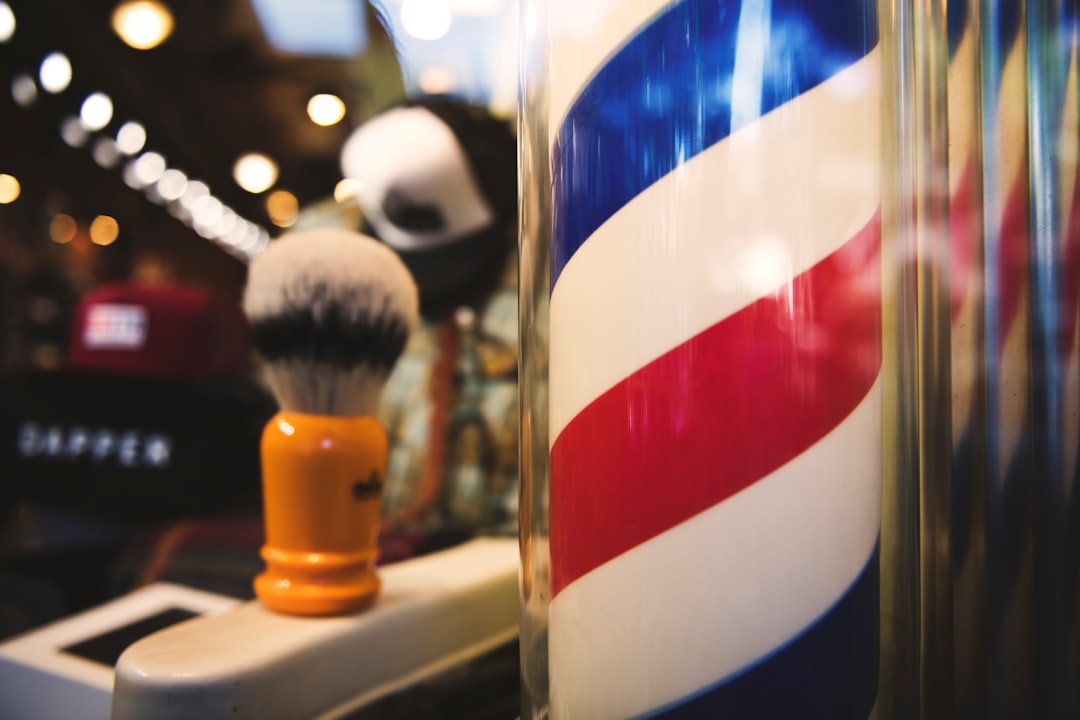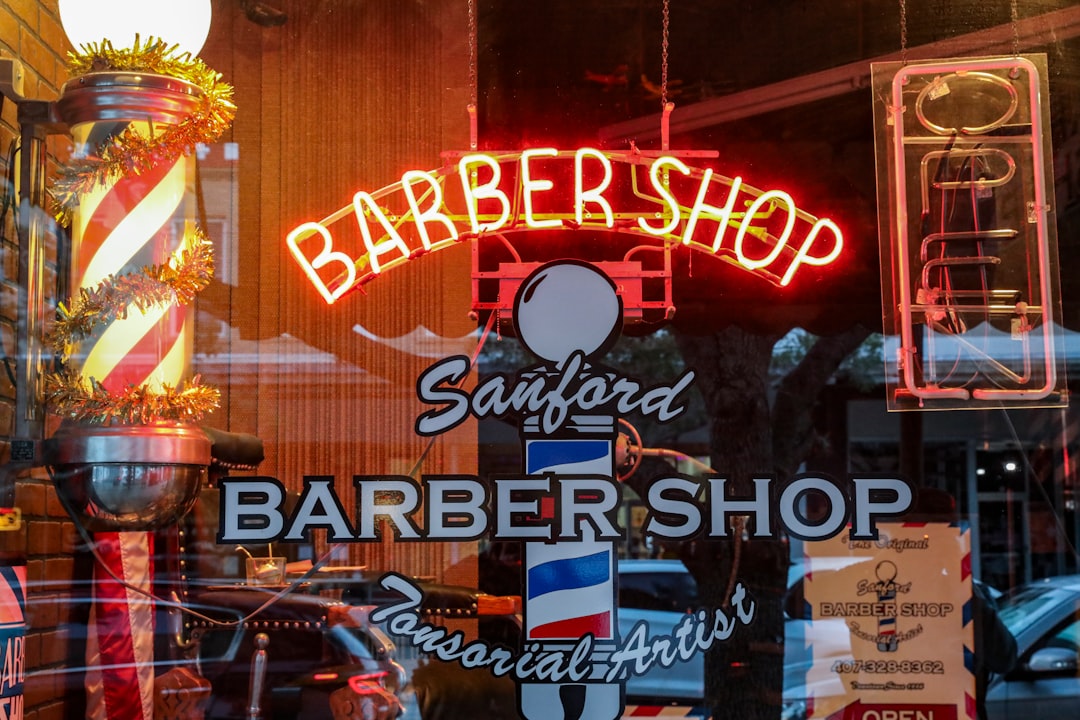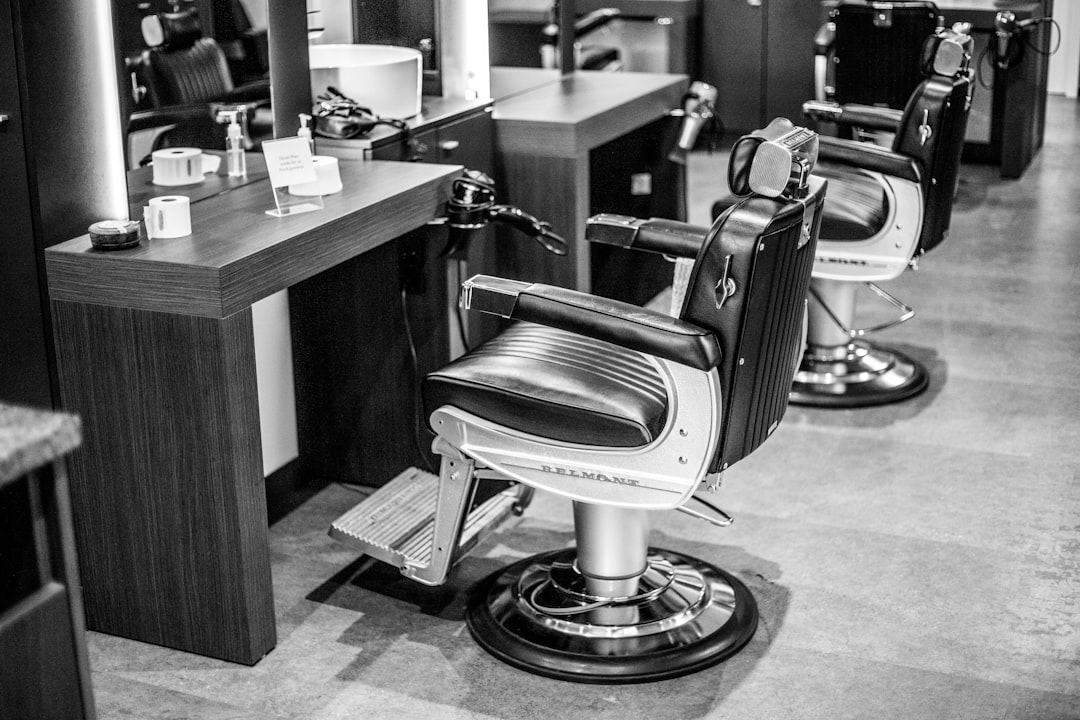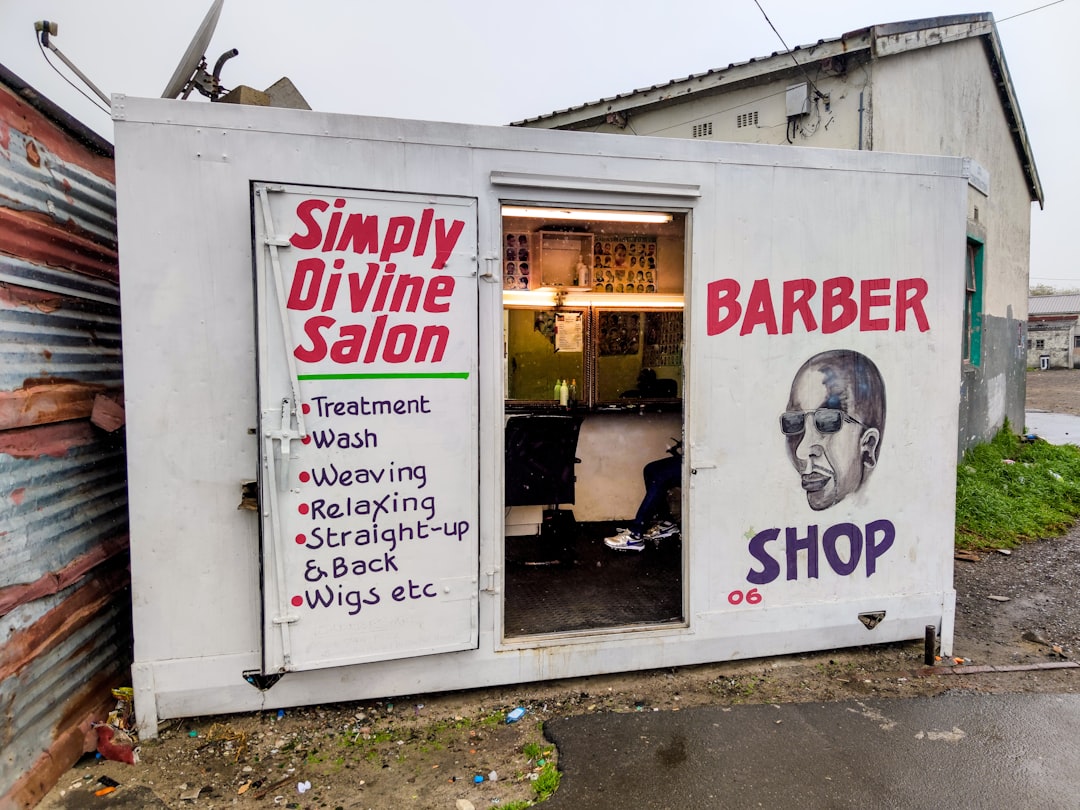

Engage prospects with a scan and streamline customer engagement with FREE QR code marketing tools by Sona – no strings attached!
Create a Free QR CodeFree consultation

No commitment

Engage prospects with a scan and streamline customer engagement with FREE QR code marketing tools by Sona – no strings attached!
Create a Free QR CodeFree consultation

No commitment
QR codes have evolved from a novelty to a strategic powerhouse in bridging offline engagement with online action. For barber equipment suppliers, QR codes represent a seamless and highly effective way to boost customer retention, facilitate repeat purchases, and deliver richer post-sale experiences without requiring an app download or complex technology.
Barber shop equipment buyers increasingly seek immediate, frictionless access to information, product reviews, and after-sale support. Traditional touchpoints like printed brochures, catalogs, and manual forms often lead to missed opportunities and a lack of meaningful follow-up. Valuable prospects can easily slip through the cracks, never making it to a CRM or subsequent outreach cycle. By turning physical interactions into digital entry points, QR codes allow suppliers to transform brief moments of interest into high-value, ongoing relationships, giving visibility into buyers who might otherwise remain anonymous.
This guide explains how barber equipment suppliers can leverage QR codes to drive customer loyalty and growth. By linking offline materials to digital journeys, suppliers can engage buyers at every stage, track conversion data, and make smarter business decisions. Integrating QR technology into traditional workflows addresses challenges like incomplete data, missed segmentation, and delayed outreach. The result is better retention, fewer blind spots, and more revenue with less operational friction.

QR codes bridge the gap between physical touchpoints and digital outcomes, making it easier to achieve goals like increasing client retention and repeat sales. Many suppliers struggle to recognize the full buying journey, especially when prospects browse catalogs or explore equipment displays without making themselves known. This lack of visibility often results in missed follow-ups or lost high-value leads that might have converted with timely outreach.
A retention-focused QR strategy starts by mapping the buyer journey to specific scan actions. Each code should serve a clear purpose: education, capture, conversion, or support. The destination experience must be simple, mobile-optimized, and connected to your CRM so you can move from anonymous interest to qualified contact in a single scan. When you make the path from scan to action obvious, you reduce friction and increase your chances of turning one-time buyers into loyal customers.
Here’s how to implement QR codes in practice:
Barber equipment suppliers who shift from analog materials to data-powered QR journeys gain deeper insight into buyer intent and behavior. Every touchpoint becomes connected and measurable, which reduces the chance of missing high-fit prospects and allows marketing and sales to build segmented, high-value audiences. Platforms like Sona QR support this transformation end to end, making high-impact retention campaigns scalable and repeatable.
By modernizing these workflows, suppliers reduce administrative overhead and increase data quality. The shift also improves customer experience, since barbers and salon owners can self-serve information and support at their convenience.

Barber equipment suppliers face unique challenges in connecting offline acquisition with ongoing digital engagement. Buyers often interact with print materials, in-store displays, and event signage without leaving a trace. Sales teams cannot follow up without contact information, and marketing cannot personalize without intent signals. QR codes solve these hurdles by turning physical interactions into measurable, actionable moments.
When implemented correctly, QR codes enable suppliers to update messaging in real time, route scanners to the most relevant content, and attribute revenue to specific touchpoints. They also allow teams to test, learn, and scale with confidence since every scan becomes a datapoint that improves future decisions. In a category where trust, performance, and reliability matter, QR codes also accelerate support and reviews that reinforce reputation. For modeling options, see Sona’s blog post Single vs Multi-Touch Attribution Models.
For barber equipment suppliers, QR codes mean higher engagement, improved conversion, and the flexibility to update offers as market conditions change. They also reduce operational costs by eliminating manual data entry and repetitive print runs that become outdated too soon.

Barber equipment suppliers benefit most from QR formats that capture intent, speed follow-up, and streamline reorders. Relying solely on generic web analytics or a single static landing page often leaves teams with incomplete or stale prospect data. A strategic mix of QR types turns every scan into a meaningful signal that can be acted on quickly.
Static QR codes work for set-and-forget use cases like manuals or safety sheets. Dynamic QR codes are better for campaigns that require tracking, A/B testing, or frequent updates. In practice, most retention and revenue campaigns in this vertical should use dynamic codes to enable optimization and closed-loop attribution.
A centralized platform like Sona QR manages all these formats within a single system. It supports both static and dynamic codes and automates campaign management, which ensures you never miss a chance to segment, retarget, or update content on the fly.

Growth often hides in plain sight. The best opportunities sit at physical touchpoints where buyers are primed to act but lack an easy way to take the next step. By placing a QR code with a strong call to action in those moments, you convert passive attention into measurable engagement and pipeline.
Start by mapping the journey from first exposure to reorder. Identify the places where anonymous interactions occur, such as browsing a catalog or handling a display unit. Then identify high-intent micro-moments, such as installing a new clipper or searching for replacement blades. Place a relevant QR code within arm’s reach and align the destination with what the buyer needs in that moment.
Suppliers who consistently map QR codes to these high-visibility placements convert more walk-by attention into qualified leads and repeat customers. Over time, these programs build a durable retention engine that can be optimized with data rather than guesswork.

Missed engagement signals and delayed follow-up remain persistent pain points for barber equipment suppliers. QR codes make it easy to reduce those gaps by connecting buyers to the right next step in seconds. They also streamline internal processes since each scan can trigger automations and data capture that once required manual effort.
Below are three practical use cases that consistently lift retention and revenue. Place QR codes where buyers naturally look, and ensure each destination is short, useful, and mobile-friendly. When the payoff is clear, scan rates rise and the data becomes rich enough to fuel personalization and upsell paths.
Use Case | Description | Outcome --- | --- | --- Product Demos | QR codes on equipment packaging or counter displays link to video tutorials and setup instructions | Empowers buyers with immediate product knowledge, reduces customer confusion, boosts satisfaction, and lowers returns by helping buyers self-serve instantly Review Collection | QR codes delivered post-purchase prompt users to leave verified feedback and ratings on platforms like Google reviews | Accelerates review collection, enhances supplier reputation, and closes the post-sale loop without relying on manual outreach Loyalty Programs | QR on loyalty cards or invoices links to exclusive deals and point tracking | Drives repeat purchases and deeper relationships by turning each after-sale touchpoint into an upsell or retention opportunity
Each use case meets the buyer where they are and offers an immediate payoff. Over time, the data generated by these scans reveals patterns: which products trigger support needs, which placements generate the most reorders, and which customer segments respond best to specific offers.
Every QR code interaction provides actionable buyer data. This solves a common challenge for suppliers who have plenty of traffic but limited segmentation. By deploying multiple codes across touchpoints and tagging scans by context, you can build precise audiences for email, SMS, and paid media without guesswork. For tactics, see Sona’s Playbook titled Intent-Driven Retargeting: Driving High-Impact Campaigns with First-Party Intent Signals.
The key is to translate scan intent into segments you can act on. Someone who scans a warranty registration code should receive different follow-ups than a shopper who scans a discount offer, and a trade show visitor should not receive the same message as a loyal buyer reordering blades. Segmentation starts with distinct QR codes, then smart tagging and automated syncing to your CRM and ad platforms.
Sona QR automates capture and enrichment for each scan, so audience building becomes a byproduct of campaign execution. This prevents your most valuable leads from remaining invisible or being re-engaged too late.
Many suppliers run print, digital, and events as separate tracks, which creates data silos and inconsistent follow-up. QR codes serve as the connecting thread across channels, giving buyers an instant bridge from offline interest to online action, and giving your team the analytics needed to optimize in real time.
A connected funnel uses QR codes to standardize data capture and calls to action. Each scan produces context you can analyze and act on, from creative performance to cross-sell triggers. When QR codes are present across the mix, you can compare placements directly and funnel resources into the assets that convert best.
QR codes become the offline onramp to your digital marketing engine. With Sona QR, you can manage all codes in one place, monitor performance across channels, and sync scan data to your CRM and ad platforms for a complete view of the buyer journey.
Clarify the business outcome you want to drive. For barber equipment suppliers, common retention goals include increasing reorders for consumables, accelerating review collection after delivery, or reducing support tickets through self-serve onboarding content. Choose a single goal for your first campaign to simplify measurement.
Align the QR experience with a moment of high intent. For example, place a reorder QR on blade packaging, or include a review QR in the order delivery email and on the invoice. Define how success will be measured, such as reorder rate within 30 days, review volume per 100 shipments, or a reduction in support queries for a specific product line.
Choose static or dynamic QR codes based on your need for flexibility and measurement. Static codes are suitable for stable content like safety sheets and manuals. Dynamic codes are ideal for campaigns that require editing the destination, A/B testing, or tracking by placement and device.
Dynamic codes are recommended for most retention initiatives because they enable closed-loop attribution and ongoing optimization without reprinting. Use them for loyalty programs, limited-time offers, and forms that feed into your CRM.
Design with scannability and clarity in mind. Add a branded frame, a short benefit-driven headline, and a clear call to action like Scan to Reorder or Scan for Setup Video. Keep contrast high, avoid clutter, and size the code for the viewing distance at the placement location.
Test across devices and environments. Scan from common distances under store lighting, test on iOS and Android, and evaluate load times on mobile data. Optimize the landing experience for a one-handed, on-the-go user who expects speed and relevance.
Roll out QR codes where your audience is most likely to act. Focus on the media barbers and shop owners handle routinely: invoices, packaging, catalogs, and event materials. Match the destination to the context. A packaging code should prioritize setup, warranty, and reorder, while a trade show code should focus on demos and pricing requests.
Stagger deployments to compare performance and scale what works. If catalog placements outperform POS displays, reallocate budget and space accordingly. Use channel-specific incentives to motivate scans, such as a show-only discount for event codes or loyalty points for packaging scans.
Set up dashboards and alerts before launch so you can monitor scans by placement, product, and region as soon as the campaign begins. Use Sona QR to analyze scan timing, device type, and conversion behavior so you spot underperforming placements quickly.
Run A/B tests on CTA language, landing page headlines, incentive amounts, and visual treatments. Tie scan events to CRM contacts and pipeline stages to measure downstream impact, not just engagement volume. Then feed insights into your next print run and creative refresh so every iteration performs better than the last.
For barber equipment suppliers, tracking must extend beyond scan volume. You need to understand which physical assets drive qualified engagements, which journeys convert to reorders or deals, and which customer segments are most valuable. Without this visibility, teams cannot prioritize accounts, personalize outreach, or validate investments in print and events.
A robust analytics framework ties every scan to real-world outcomes. It shows you that a scan from a clipper packaging insert led to a warranty registration, a product review, and eventually a cross-sell on guards or disinfectants. It also helps you identify leading indicators of churn or expansion, such as a spike in support scans that suggests an onboarding gap or an uptick in accessory scans that signals readiness for a bundle offer. See Sona’s blog post titled The Essential Guide to Offline Attribution.
Platforms like Sona QR and Sona.com are designed to deliver this level of insight. Sona QR captures and organizes scan data, while Sona.com connects those interactions to identity, pipeline, and revenue, giving suppliers the analytics backbone to prove impact and scale confidently.
Once your first QR initiatives are live, expand methodically. Choose tactics that fit the physical media common in this vertical and support a clear buyer journey. Prioritize methods that improve attribution and streamline follow-up so you can move quickly from signal to action.
Training front-line teams is often the fastest lever for lift. Sales reps and customer service can educate buyers on what each code offers and why scanning helps them. The payoff is higher scan rates, better data, and cleaner handoffs between teams. To speed setup, you can also use ready-made QR displays.
Creative example: Place a QR code on warranty cards. When scanned, customers register their new professional barber equipment and unlock scheduled maintenance reminders plus a first reorder discount on compatible accessories. This captures account-level data early and surfaces service signals that inform upsell and retention strategies throughout the product lifecycle.
QR codes have matured into a foundational strategy for barber equipment suppliers. They turn every print material and product package into a digital bridge, meeting the needs of modern barbers and salon owners who expect speed, convenience, and reliable support. At the same time, suppliers gain a new layer of actionable data that powers timely lead capture, personalization, and retention.
By capturing every moment of buyer interest, from events and catalogs to setup and support, QR codes enable a connected customer experience that reduces guesswork and improves outcomes. With a platform like Sona QR, the transition is straightforward. You can connect all stages of the journey and turn each scan into a signal that informs segmentation, outreach, and revenue strategy.
Suppliers who prioritize QR-driven engagement position themselves at the forefront of the industry. They make every physical interaction measurable, they act faster on intent, and they systematically unlock new opportunities to upsell and nurture. The result is higher loyalty, richer insights, and sustained growth.
If you are ready to see how this works for your audience, start by generating a few dynamic QR codes for your most-trafficked touchpoints. Launch with one clear use case, measure rigorously, and iterate. With Sona QR, you can create and track your first codes in minutes, sync engagement to your CRM, and prove how QR-driven retention pays off one scan at a time. Start creating QR codes for free.
QR codes have transformed the barber equipment suppliers industry from traditional sales tactics into dynamic, measurable retention tools. Whether it’s boosting customer loyalty, enhancing post-purchase engagement, or delivering personalized offers, QR codes replace guesswork with instant, mobile-friendly interactions that capture real-time data to turn every customer touchpoint into a retention powerhouse. Imagine knowing exactly which follow-up offers keep your clients coming back—and being able to optimize those campaigns instantly.
With Sona QR, you can create dynamic, trackable QR codes in seconds, update your retention campaigns without reprinting materials, and connect every scan directly to customer loyalty and repeat sales. No missed opportunities, just smarter, more profitable relationships. Start for free with Sona QR today and turn every scan into a loyal customer, an upsell, or a lasting connection.
QR codes help barber equipment suppliers boost customer retention, facilitate repeat purchases, deliver richer post-sale experiences, and turn physical interactions into measurable digital engagement without requiring app downloads.
Suppliers can implement QR codes at key touchpoints like packaging, invoices, and displays to provide product information, collect reviews, book demos, and automate follow-up, thereby converting anonymous interest into qualified contacts and driving repeat sales.
Dynamic QR codes are recommended for campaigns requiring tracking, updates, and closed-loop attribution, while static QR codes work well for fixed resources like safety sheets and manuals.
Effective placements include trade show booths, product packaging, loyalty program materials, point-of-sale displays, direct mail, catalogs, invoices, and event signage, each aligned with relevant buyer needs.
QR codes provide data on scan volume, location, time, and device, which can be tied to specific campaigns, products, and placements using platforms like Sona QR, enabling real-time optimization and revenue attribution.
Common use cases include linking to product demos, collecting verified customer reviews, and supporting loyalty programs to drive repeat purchases and improve customer satisfaction.
By deploying unique QR codes for different buyer journey stages and tagging scans by intent and context, suppliers can segment audiences precisely and sync data with CRM and ad platforms for targeted follow-up and retargeting.
Suppliers should design QR codes with clear calls to action, test them across devices, deploy them at high-impact physical touchpoints, align destinations with buyer intent, and continuously track and optimize performance.
QR codes connect offline materials like brochures, print ads, events, and direct mail to online experiences, standardizing data capture and enabling cross-channel analytics and personalized buyer engagement.
The article does not specify particular suppliers but suggests that leveraging QR-driven engagement and digital tools like Sona QR can help suppliers better connect with buyers and optimize sales channels.
The latest trend is using QR codes to bridge offline and online buyer interactions, enabling real-time content updates, automated follow-up, data-driven personalization, and multi-touch attribution for improved retention and growth.
While the article focuses on marketing strategies, it suggests using QR codes on packaging to provide setup videos, warranty registration, and maintenance reminders that help buyers properly use and maintain equipment for durability and efficiency.
Suppliers can use QR codes on displays and packaging to access detailed product demos, reviews, and specs that help buyers compare options and make informed decisions aligned with their shop needs.
Platforms like Sona QR provide centralized management of static and dynamic codes, campaign automation, scan tracking, CRM integration, and analytics to optimize engagement and retention.
Use Sona QR's trackable codes to improve customer acquisition and engagement today.
Create Your FREE Trackable QR Code in SecondsJoin results-focused teams combining Sona Platform automation with advanced Google Ads strategies to scale lead generation

Connect your existing CRM

Free Account Enrichment

No setup fees
No commitment required

Free consultation

Get a custom Google Ads roadmap for your business






Launch campaigns that generate qualified leads in 30 days or less.
